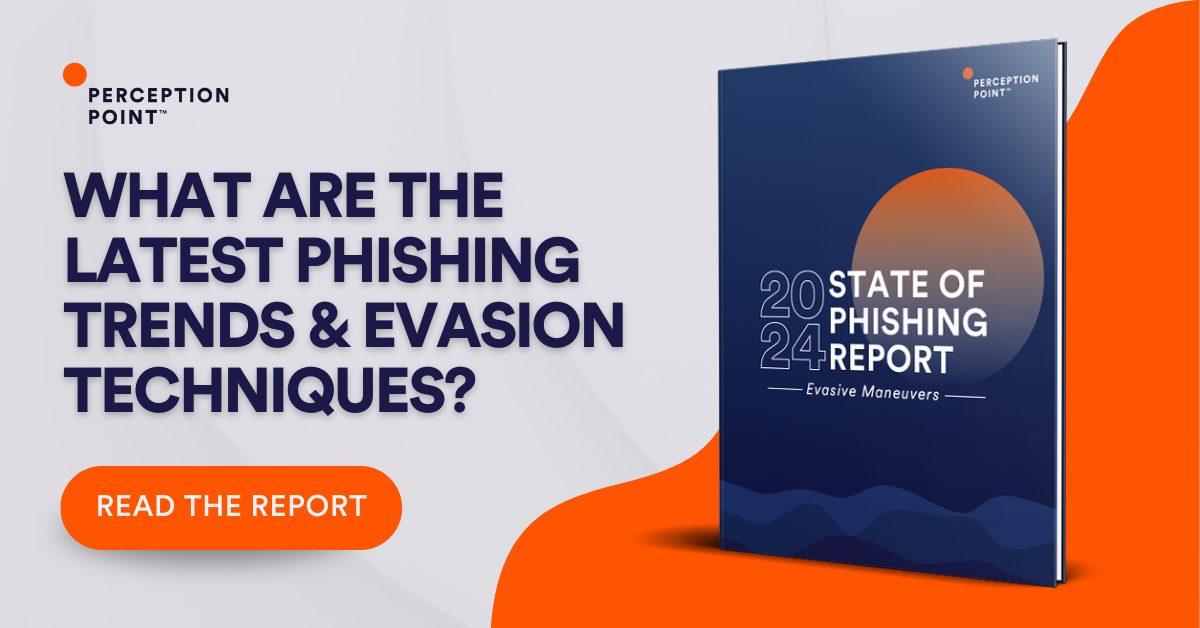Social engineering attacks have become increasingly prevalent and sophisticated. The rapid advancement of generative AI is taking these techniques to a whole new level. Attackers can now generate convincing, highly personalized communications, which can even include the voice and images of authoritative figures at an organization. This creates new challenges and requires innovative defensive measures, which we’ll discuss in this article.
With the increasing dependency on technology and the Internet, individuals and organizations have become more susceptible to social engineering. It’s crucial for both individuals and organizations to understand what these attacks entail and take steps to prevent them.
What Is a Social Engineering Attack?
A social engineering attack is a method used by hackers to manipulate individuals into revealing confidential information. This technique doesn’t necessitate the usage of technical hacking skills. Instead, it relies on human error and psychological manipulation to gain access to systems or data.
Social engineering attacks prey on human psychology and curiosity. The attacker often masquerades as a trusted entity to trick users into falling for the bait. The objective is to deceive the user into divulging vital information, like passwords, which can then be used to breach systems or networks for malicious intent.
This is part of a series of articles about phishing.
In this article
How Do Social Engineering Attacks Work?
Non-Targeted Social Engineering Attacks
Non-targeted social engineering attacks aim to reach a broad audience with the hope that a few will fall for the trap. These are not personalized and are often conducted at scale. A common example is a mass email campaign, where attackers send the same deceptive email to thousands of recipients.
In these attacks, the perpetrators rely on a numbers game, knowing that even if a small percentage of recipients fall for the scam, it’s a success. Another method is the indiscriminate distribution of malware-infected software or media via social engineering techniques.
Non-targeted attacks often exploit common human traits such as fear, urgency, or the desire for a bargain. They may use alarming subject lines in emails or too-good-to-be-true offers to lure victims. Despite their lack of personalization, these attacks can still be quite effective, especially among less tech-savvy users.
Targeted Social Engineering Attacks
Some social engineering attacks are specifically targeted against individuals who have something valuable to the attacker—such as access to financial resources or administrative privileges.
The attacker usually begins by gathering information about the target. This research phase could involve studying their social media profiles, understanding their professional role, or learning about their personal life. The more information the attacker has, the easier it is to appear trustworthy and authentic.
Once the attacker has gathered enough information, they proceed with the attack, which could be an email, a social media message, or even a phone call. The attacker will then leverage the collected information to convince the victim to reveal their confidential information or perform a task that compromises their security.

Tal ZamirCTO, Perception Point
Tal Zamir is a 20-year software industry leader with a track record of solving urgent business challenges by reimagining how technology works.
TIPS FROM THE EXPERTS
- Utilize real-time communication analysis. Email security solutions that perform real-time analysis of internal communications can flag messages containing unusual requests or language patterns that don’t align with the sender’s usual communication style, often a sign of a compromised account or a spoofed email.
- Conduct security training simulations. Regularly simulate AI-driven phishing attacks as part of employee security training. This prepares employees to recognize the sophisticated language patterns and personalized content that generative AI can produce, reducing their susceptibility to these attacks.
- Leverage threat intelligence to identify emerging AI-based attack vectors. Subscribe to threat intelligence services that focus on AI and deepfake technologies. Staying informed about the latest AI-driven social engineering tactics allows you to anticipate and preemptively address new threats.
- Deploy content authenticity verification tools. Use AI-powered email security solutions that can detect and verify the authenticity of content in real-time. These solutions can identify signs of cyberattacks and prevent them before they reach your employees.
- Implement zero-trust network access (ZTNA). Adopt a zero-trust approach to network access, where all users, even those inside the network perimeter, are authenticated, authorized, and continuously validated for security configuration before being granted or maintaining access to applications and data.
How Is Generative AI Changing Social Engineering Attacks?
Generative AI technologies like deepfakes and Large Language Models (LLMs) are revolutionizing the landscape of social engineering attacks. These technologies allow attackers to create highly realistic and personalized content, making it easier to deceive targets.
Generative AI can craft convincing fake images or videos (deepfakes), while LLMs like OpenAI’s ChatGPT and Google’s PaLM can generate human-like text, enhancing the effectiveness of phishing emails or chat-based scams.
Deepfakes can be used to fabricate videos or audio recordings of trusted individuals, such as company executives or public figures, to manipulate targets into performing actions or divulging sensitive information. For example, an attacker could create a deepfake audio recording of a CEO instructing employees to transfer funds or share confidential data, leading to financial loss or data breaches.
LLMs are particularly useful in automating the creation of persuasive and contextually relevant scam messages. They can generate convincing emails or chat messages that mimic the writing style of a particular individual, making it difficult for recipients to distinguish between legitimate and fraudulent communications. This capability makes it easier for attackers to scale their operations and target individuals or organizations with highly personalized and believable messages.
The use of these advanced technologies in social engineering attacks underscores the need for individuals and organizations to be extra vigilant and to employ sophisticated detection and prevention methods. Traditional security measures may not be sufficient to counter these AI-powered threats, requiring a combination of technological solutions and heightened awareness among potential targets.
Types and Examples of Social Engineering Attacks
Phishing
Phishing is perhaps the most prevalent type of social engineering attack. It usually involves an attacker sending fraudulent emails or messages that seem to originate from a reputable source. The objective is to trick the recipient into revealing personal information, such as passwords and credit card numbers.
An example of a phishing attack could be an email pretending to be from a recipient’s bank, asking them to click a link and verify account details due to some suspicious activity. Unbeknownst to the recipient, the link leads to a fake website controlled by the attacker, designed to capture the details they enter.
Learn more in our detailed guide on how to prevent phishing
Quishing
QR code phishing is a novel form of social engineering attack where scammers use QR codes to mislead individuals into disclosing sensitive information. This technique involves the distribution of malicious QR codes, which, when scanned, lead users to fraudulent websites or automatically prompt actions on their smartphones. These QR codes might be presented as part of an advertisement, embedded in emails, or even displayed in public places, masquerading as legitimate.
For instance, attackers might place a sticker with a malicious QR code over a legitimate one at an ATM or on a poster offering a special deal. Unsuspecting individuals scanning the QR code could be redirected to a fake website mimicking a bank or a retail site, where they are asked to enter personal or financial information. In other cases, scanning the QR code could trigger the download of malware or lead to a phishing site designed to harvest login credentials.
Learn more in our detailed guide on how to prevent quishing attacks
Business Email Compromise (BEC)
Business Email Compromise (BEC) is a sophisticated scam that targets businesses who conduct wire transfers. Attackers pretend to be top executives or trusted vendors and request wire transfers to fraudulent locations.
A common example of a BEC attack involves a seemingly harmless email sent to the finance department. The email appears to be from the CEO, requesting an urgent wire transfer to a new vendor. In reality, the email is from an attacker, and the funds are transferred directly into their account.
Learn more in our detailed guide on how to prevent BEC attacks
Baiting
Baiting involves a promise to entice victims. It is similar to phishing, but the attacker promises the victim a reward. The victim is tricked into providing sensitive information or downloading malware in return for the reward.
An example of baiting could be a USB drive left in a public place with a label promising something enticing, like salaries of a known company. If the finder inserts the USB drive into a computer, it releases malware, giving the attacker access to the system.
Tailgating
Tailgating, also referred to as piggybacking, involves an attacker seeking entry to a restricted area without proper authentication. The attacker usually follows an authorized person into a secure area.
An example of tailgating could be a stranger pretending to have misplaced their security card and asking an employee to hold the door for them. Once inside, they can access information, plant malicious software, or conduct any number of activities that compromise security.
Pretexting
Pretexting is a type of social engineering attack in which an attacker creates a scenario or “pretext” to trick the target into providing sensitive information. For example, an attacker might pose as a bank employee and call a customer, stating that they need security information to verify the customer’s account. In reality, the attacker is after the customer’s personal information such as account numbers or passwords.
Pretexting often involves research on the target to make the deception more believable. Attackers might use information available publicly, such as social media profiles, to create a convincing story. This type of social engineering attack can be highly effective as it leverages the human tendency to trust authorities and help others.
Quid Pro Quo
Quid pro quo, a Latin phrase meaning “something for something,” describes a type of social engineering attack where the attacker promises a benefit in exchange for information. This could involve an attacker posing as an IT support person offering to solve a computer issue in exchange for the target’s password.
In another example, the attacker might send an email offering a gift card or cash reward in exchange for completing a survey. The survey then asks for sensitive information. Quid pro quo attacks are particularly dangerous because they tempt victims with immediate benefits, making them more likely to ignore potential risks.
Scareware
Scareware, also known as deception software, is a type of social engineering attack that uses fear and urgency to trick victims into taking an action that compromises their security. An example of a scareware attack is a pop-up message or email warning the user that their computer is infected with a virus. The message then prompts the user to download a specific software to remove the virus. However, the software is malicious and can lead to the theft of sensitive data.
Scareware attacks exploit the fear of losing valuable data or the functionality of a device. This fear, combined with a sense of urgency, often prompts victims to act quickly without considering the legitimacy of the warning.
6 Ways to Prevent Social Engineering Attacks
1. Conduct Employee Education and Training
The first step in preventing social engineering attacks is security awareness training for employees about these threats. This includes teaching them about the different types of attacks, how they work, and the tactics used by attackers. Real-life examples and simulations can be used to make the training more practical.
Employees should be trained to be skeptical of unsolicited communications, especially those asking for sensitive information. They should also be encouraged to report any suspicious activity, as this can help identify and stop attacks before they cause damage. Employees should also learn to verify sensitive requests, such as a request to transfer funds, even if they appear to come from a relevant authority in the company.
2. Implement Access Control and Authorization Policies
Implementing robust access control and authorization policies can help prevent social engineering attacks. This involves limiting access to sensitive information to only those who need it for their work. It also includes enforcing strong password policies and using multi-factor authentication.
Access control measures can also include monitoring and logging access to sensitive information. This can help detect any unauthorized access and provide a trail of evidence in case of an attack.
3. Use Email Security and Anti-Phishing Solutions
Advanced email security solutions can help protect against social engineering attacks by detecting and blocking suspicious emails. These solutions verify the sender’s identity to prevent spoofing attacks, and use machine learning and AI to analyze emails to detect phishing or find signs of other scams.
In addition to blocking malicious emails, these solutions can provide users with warning signs when an email is suspicious. This can help educate users about threats and reinforce their security training.
5. Establish an Incident Response Plan
Having a clear incident response plan in place is crucial for dealing with social engineering attacks. This plan should outline the steps to be taken in case of an attack, including how to report the attack, how to contain the damage, and how to recover.
The plan should also include communication strategies for informing employees, customers, and other stakeholders about the attack. This can help manage the situation and prevent further damage.
6. Using AI to Fight AI-Powered Attacks
AI-powered cybersecurity technology can help detect and stop AI-powered social engineering attacks. By using Transformer-based models, similar to the ones that power large language models like GPT, it is possible to identify characteristics that suggest an email was generated by AI, and identify whether it might have malicious intent.
It’s not enough just to detect AI-generated content, because today many legitimate emails today are written with the help of generative AI tools, or use templates with recurring phrases, which might be similar to the output of LLMs. Advanced email security tools combine AI detection with traditional social engineering detection tools, such as sender reputation and authentication protocols information (SPF, DKIM, DMARC) to eliminate false positives, and identify emails that are both generated by AI and highly likely to be from a malicious source.
Preventing AI-Based Social Engineering Attacks with Perception Point
Perception Point’s approach to combating GenAI-generated social engineering, particularly Business Email Compromise (BEC) threats, involves an advanced detection solution that utilizes Transformers, AI models adept at understanding the semantic context of text. This method is effective due to its ability to recognize and analyze patterns characteristic of Large Language Model (LLM)-generated content.
The process works as follows:
- Pattern identification: The system groups emails with similar semantic content, allowing it to pinpoint specific patterns indicative of LLM-generated text. This model was initially trained on a vast array of malicious emails and continues to evolve with exposure to new attacks.
- Probability scoring and analysis: When an email is processed, the model evaluates its content, identifying the likelihood of the email being LLM-generated and its potential for malicious intent. It also provides a detailed textual analysis to identify the nature of the threat.
- Minimizing false positives: To address the challenge of false positives, Perception Point’s model integrates insights from the previous steps with additional data, such as sender reputation and authentication protocols, to accurately determine if the content is AI-generated and whether it is malicious, spam, or legitimate.
By implementing this innovative AI technology in their multi-layered detection platform, Perception Point’s Advanced Email Security provides a robust defense against GenAI-generated email threats. This approach leverages the identifiable patterns in LLM-generated content, advanced image recognition, anti-evasion algorithms, and patented dynamic engines. Perception Point can be used to proactively neutralize these evolving threats, preventing them from reaching the inboxes of end-users and causing damage.
Learn more in our blog post: An AI for an AI: LLM-Based Detection of GPT-Generated BEC Attacks

A social engineering attack is a method used by hackers to manipulate individuals into revealing confidential information. This technique doesn’t necessitate the usage of technical hacking skills. Instead, it relies on human error and psychological manipulation to gain access to systems or data. Social engineering attacks prey on human psychology and curiosity. The attacker often masquerades as a trusted entity to trick users into falling for the bait. The objective is to deceive the user into divulging vital information, like passwords, which can then be used to breach systems or networks for malicious intent.
There are two main types of social engineering attacks: Non-targeted and Targeted. Non-targeted social engineering attacks aim to reach a broad audience with the hope that a few will fall for the trap. Targeted social engineering attacks are specifically targeted against individuals who have something valuable to the attacker—such as access to financial resources or administrative privileges.
Generative AI technologies like deepfakes and Large Language Models (LLMs) are revolutionizing the landscape of social engineering attacks. These technologies allow attackers to create highly realistic and personalized content, making it easier to deceive targets. Deepfakes can be used to fabricate videos or audio recordings of trusted individuals, such as company executives or public figures, to manipulate targets into performing actions or divulging sensitive information. LLMs are particularly useful in automating the creation of persuasive and contextually relevant scam messages. They can generate convincing emails or chat messages that mimic the writing style of a particular individual, making it difficult for recipients to distinguish between legitimate and fraudulent communications.
– Phishing
– Quishing
– Business Email Compromise (BEC)
– Baiting
– Tailgating
– Pretexting
– Quid Pro Quo
– Scareware
1. Conduct Employee Education and Training
2. Implement Access Control and Authorization Policies
3. Use Email Security and Anti-Phishing Solutions
5. Establish an Incident Response Plan
6. Using AI to Fight AI-Powered Attacks
























